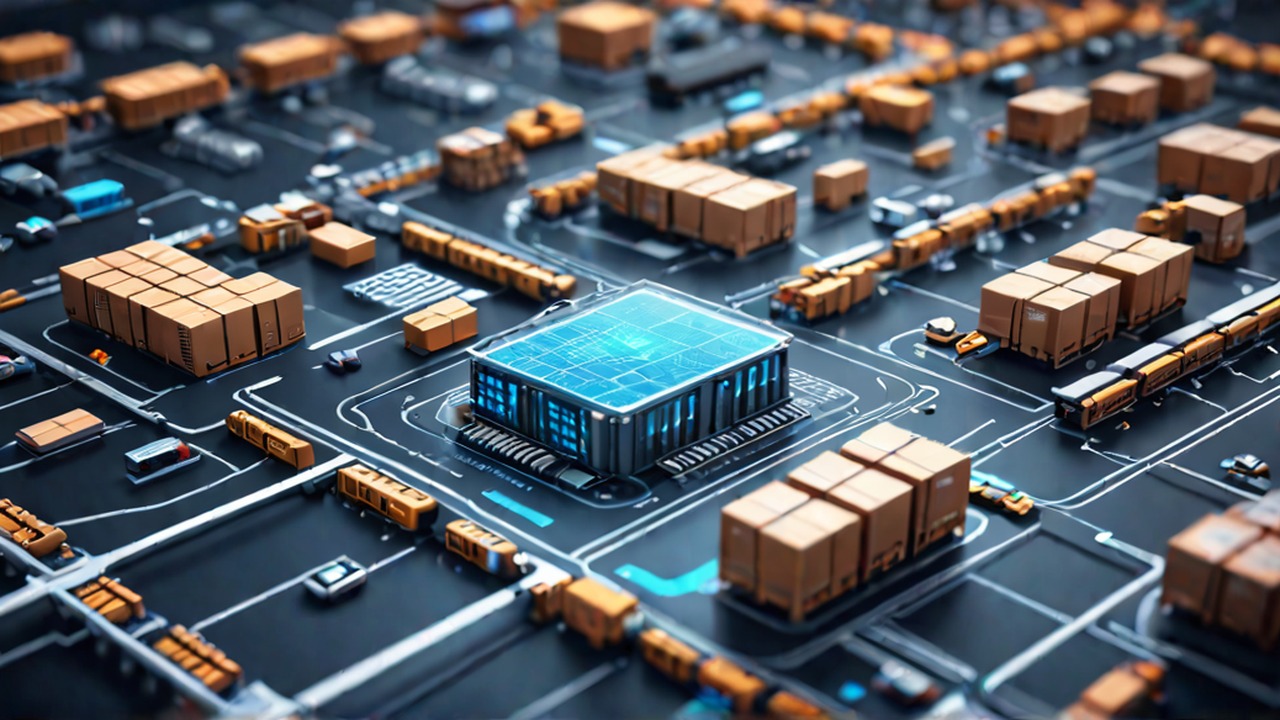Abstract
Amazon’s digital supply chain is a technological marvel, integrating software and hardware to connect every link of the chain, from suppliers to customers. It uses advanced algorithms and machine learning to predict stock needs with precision, ensuring products are available when customers want them. Amazon’s fulfillment centers feature robots and human workers, enhancing efficiency and reducing mistakes. Amazon Web Services (AWS) manages the vast amounts of data generated, allowing Amazon to scale up or down quickly. Amazon’s big data analysis and continuous monitoring of suppliers ensures they meet high standards, allowing for forecasting future trends and preparing the supply chain accordingly. The company has over 175 fulfillment centers worldwide, strategically located to maximize storage and minimize delivery times. Amazon Flex program and local partnerships with regional logistics providers enable competitive delivery times and costs worldwide. Amazon’s supply chain innovations include same-day delivery in many cities, Prime Now hubs, and Amazon Fresh and Pantry.
Keyword: Amazon’s digital supply chain
Introduction
When we think of online shopping, chances are the first name that comes to mind is Amazon. Over the past few decades, Amazon has transformed from a humble online bookstore into a global e-commerce giant. While it’s easy to attribute Amazon’s success to its vast product range and aggressive marketing, the real engine driving this behemoth is its digital supply chain. In this article, we’ll dive deep into the intricacies of Amazon’s digital supply chain, exploring how it works and why it’s so effective. The backbone of Amazon’s empire is the digital supply chain.
Integrated Technology Systems
Amazon’s digital supply chain is a masterclass in technological integration. It’s a system where software and hardware seamlessly connect every link of the chain, from suppliers to customers.
Inventory Management
Amazon uses advanced algorithms and machine learning to predict stock needs with incredible accuracy. This ensures that products are available when customers want them, minimizing both overstock and stockouts. Imagine knowing just how much of each item you’ll need before customers even order it – that’s Amazon’s superpower.
Warehouse Robotics
Step into an Amazon fulfillment center, and you might feel like you’ve entered a sci-fi movie. Robots zip around the floor, moving shelves to human workers who pick and pack items. These robots, part of the Amazon Robotics family, work in harmony with human employees to boost efficiency and reduce mistakes.
Cloud Computing
Amazon Web Services (AWS) isn’t just a cash cow for Amazon; it’s also the backbone of its supply chain. AWS provides the computational muscle and data storage needed to manage and analyze the vast amounts of data Amazon generates every second. This cloud-based approach allows Amazon to scale up or down quickly, ensuring smooth operations even during peak times like Black Friday.
Data-Driven Decision Making
Big data isn’t just a buzzword at Amazon; it’s a way of life. The company’s ability to analyze and act on data is a huge part of its supply chain prowess.
Customer Data
Every click, search, and purchase on Amazon’s website feeds into a massive database. This information helps Amazon understand what customers want and predict future buying patterns. Ever noticed how Amazon seems to know what you want before you do? That’s data at work.
Supplier Performance
Amazon continuously monitors its suppliers to ensure they meet its high standards. Suppliers are rated on metrics like delivery timeliness, product quality, and adherence to guidelines. This transparency helps maintain a smooth supply chain and quickly address any hiccups.
Predictive Analytics
By looking at past data, Amazon can forecast future trends and prepare its supply chain accordingly. This capability is crucial for managing seasonal demand swings and ensuring new product launches go off without a hitch.
Global Network and Scalability
Amazon’s supply chain isn’t confined to one region; it’s a global powerhouse, designed to scale efficiently.
Fulfillment Centers
Amazon has over 175 fulfillment centers worldwide, strategically located to maximize storage and minimize delivery times. These centers are the heart of Amazon’s logistics, where products are sorted, packed, and shipped with incredible precision.
Delivery Network
From drones to delivery vans, Amazon is constantly innovating to get packages to customers faster and cheaper. The Amazon Flex program, which uses gig economy drivers, adds flexibility to the delivery process, helping Amazon handle surges in demand.
Global Reach
Operating in numerous countries, Amazon adapts its supply chain to local markets. This global presence allows Amazon to serve a diverse customer base while leveraging economies of scale. Local fulfillment centers and partnerships with regional logistics providers enable competitive delivery times and costs worldwide.
Customer-Centric Innovations
Everything Amazon does is with the customer in mind. Its supply chain innovations are no exception.
Same-Day Delivery
In many cities, Amazon offers same-day delivery, made possible by a finely tuned coordination of inventory, warehouse operations, and last-mile delivery. Prime Now hubs, small warehouses in densely populated areas, play a key role in this speedy service.
Amazon Prime
Prime members enjoy fast shipping, exclusive deals, and access to streaming services. The logistics behind Prime are complex, requiring vast resources to ensure rapid delivery. This service not only enhances customer loyalty but also sets Amazon apart from competitors.
Amazon Fresh and Pantry
By venturing into the grocery sector, Amazon has extended their supply chain to include temperature-controlled logistics and specialized handling for perishable goods. Amazon Fresh and Pantry deliver groceries and household items right to your door, ensuring freshness and quality.
Sustainability Initiatives
Recognizing the environmental impact of its operations, Amazon is making strides toward sustainability.
Climate Pledge
Amazon aims to achieve net-zero carbon by 2040. This involves transforming its supply chain operations to be more eco-friendly, from using electric delivery vehicles to optimizing packaging. The Shipment Zero initiative seeks to make all shipments net-zero carbon, with a goal of 50% of shipments reaching this milestone by 2030.
Renewable Energy
Amazon is investing heavily in renewable energy to power its operations. This includes building solar and wind farms and integrating renewable energy sources into its supply chain infrastructure. The company is on track to power its global operations with 100% renewable energy by 2025.
Sustainable Packaging
Amazon’s Frustration-Free Packaging reduces excess materials and makes it easier for customers to open their packages. The company is also working to eliminate single-use plastics in its packaging, promoting recyclability and sustainability.
Conclusion
Amazon’s digital supply chain is a testament to achieve when technology, data, and a customer-centric approach of harmonious integration. It’s a dynamic, ever-evolving system that adapts to new challenges and sets new standards for efficiency and innovation.Amazon’s culture of innovation ensures its supply chain remains at the cutting edge. The company is constantly exploring new technologies, such as artificial intelligence, blockchain, and the Internet of Things (IoT), to further enhance its operations.The COVID-19 pandemic highlighted the importance of a resilient supply chain. Amazon’s ability to quickly adapt to changing circumstances, like increased online shopping demand and disrupted supply lines, showcased its robustness. Future challenges, whether economic, environmental, or geopolitical, will test and likely strengthen Amazon’s supply chain.Amazon’s digital supply chain is built to serve the customer. The company’s relentless focus on improving the customer experience drives its supply chain innovations. As consumer expectations evolve, Amazon will continue to adapt, ensuring that it meets and exceeds these expectations.In essence, Amazon’s supply chain is not just a support system for its business—it is the foundation upon which its empire is built. For businesses looking to emulate Amazon’s success, understanding and innovating within the digital supply chain space is not just an option; it is a necessity. By leveraging technology, data, and a customer-first approach, companies can create supply chains that are not only efficient and scalable but also resilient and sustainable, paving the way for future success.
Further Reading:
- “AN INSIGHT INTO AMAZON SUPPLY CHAIN STRATEGY”. https://dfreight.org/blog/an-insight-into-amazon-supply-chain-strategy/
- “End-to-end supply chain management for multiple sales channels”.https://sell.amazon.com/programs/supply-chain
- https://youtu.be/kgitNIrCvao?si=q0M6SE2z1co1YkAm
- https://rumble.com/v4yub0h-secrets-of-amazons-digital-supply-chain.html





